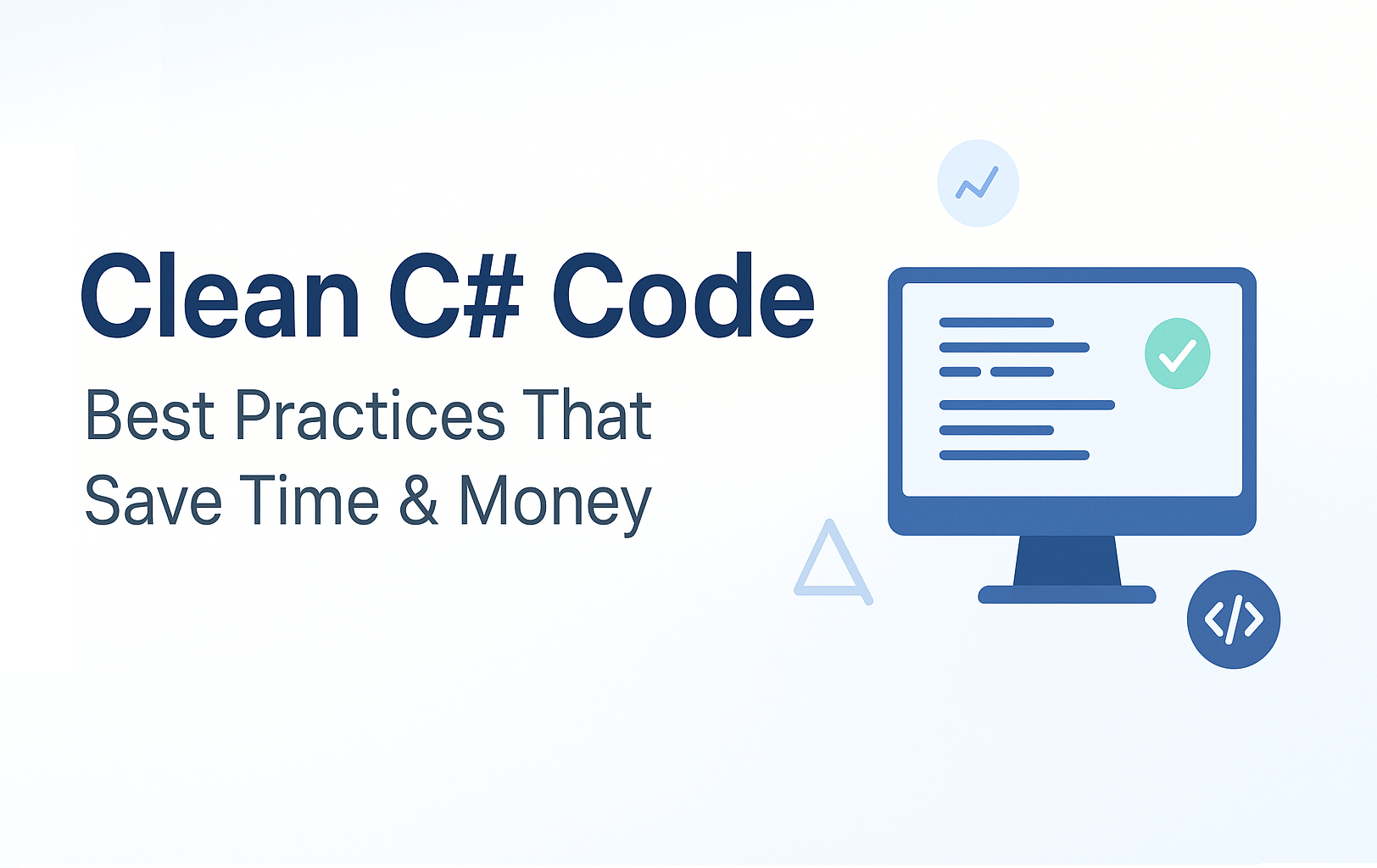Introduction
When it comes to enterprise software, the real cost doesn’t lie in writing code — but in maintaining it. Poorly structured C# code can quickly turn into technical debt, slowing down development, increasing bugs, and frustrating your team. The result? Higher costs, delayed projects, and lost opportunities.
The good news: with the right practices, your C# codebase can remain clean, predictable, and easy to extend, even as your application grows. Here are the best practices that make a measurable difference.
1. Favor Readability Over Cleverness
Code is read more often than it is written.
Readable C# code may look “simpler,” but it ensures that developers can onboard faster, debug quicker, and avoid mistakes. Descriptive variable names, clear method responsibilities, and consistent formatting go a long way.
👉 A rule of thumb: if a developer needs extra comments to understand your code, it’s probably too complex.
2. Stick to SOLID Principles
SOLID isn’t just a buzzword — it’s the foundation of maintainable C# applications.
- Single Responsibility Principle → each class should do one thing, and do it well.
- Open/Closed Principle → extend functionality without rewriting existing code.
- Dependency Inversion → rely on abstractions, not concrete implementations.
By following SOLID, you minimize dependencies, reduce side effects, and make codebases far more adaptable.
3. Automated Testing as a Safety Net
Unit and integration tests are not optional. They:
- Validate correctness,
- Prevent regression,
- Encourage modular design.
Well-structured tests pay off every time you upgrade frameworks, refactor business logic, or onboard new developers.
4. Consistent Code Reviews
No matter how skilled your team is, blind spots happen.
Code reviews aren’t about catching typos — they build a culture of shared knowledge and consistent standards. Regular peer reviews reduce bugs and improve overall quality, while ensuring that no one becomes a “single point of failure” in your project.
5. Automate the Boring Stuff
From code formatting to CI/CD pipelines, automation reduces human error and saves time. Tools like SonarQube, StyleCop, or Roslyn analyzers can enforce quality rules before bad code ever hits production.
Conclusion
Writing clean, maintainable C# code isn’t just a matter of elegance — it’s about saving money, reducing risk, and empowering your team to scale without burning out.
Companies that invest in maintainable codebases discover that development becomes faster, onboarding smoother, and long-term costs significantly lower. 👉 The question isn’t whether you can afford to implement best practices — it’s whether you can afford not to.

